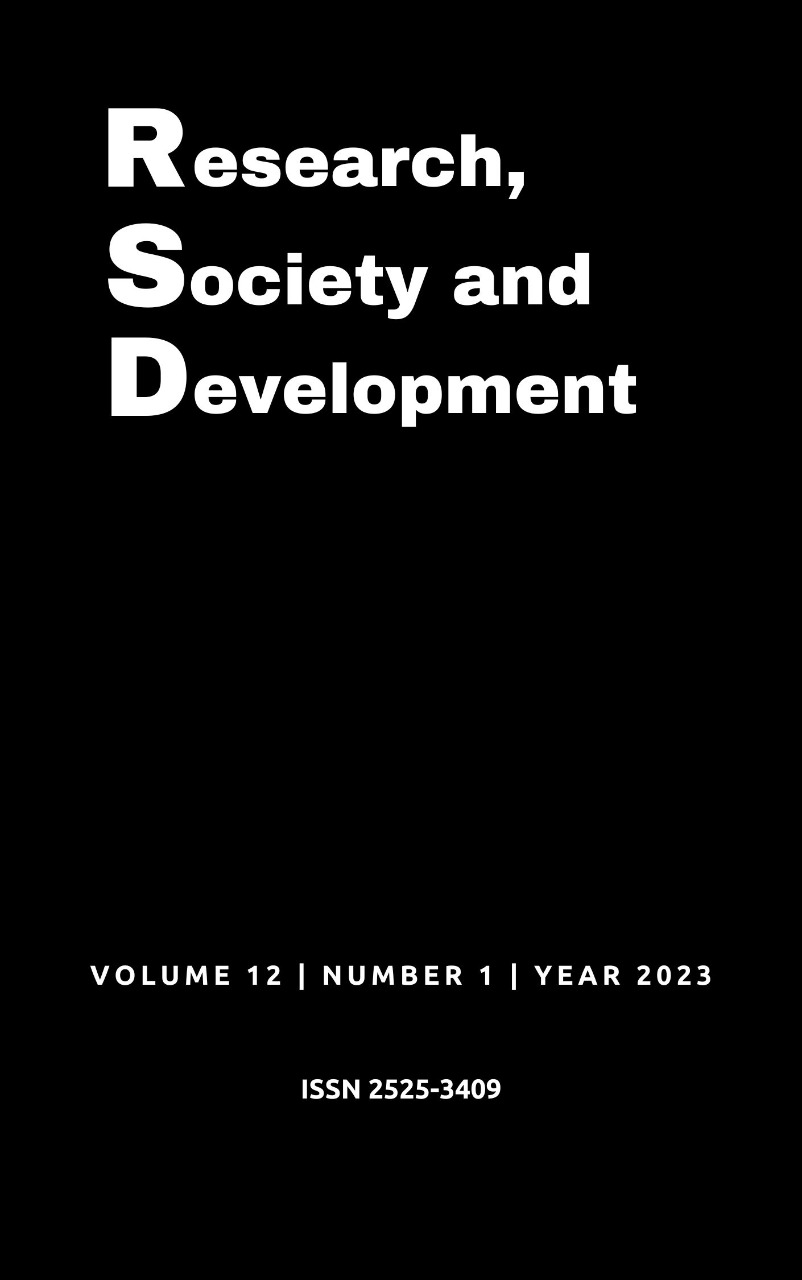Dental treatment in patients with hereditary coagulopathy: hemophilia and Von Willebrand's disease
DOI:
https://doi.org/10.33448/rsd-v12i1.36837Keywords:
Hemophilia; Blood coagulation; Dental care.Abstract
Coagulopathy is defined as a “bleeding disease”, resulting from the quantitative and/or qualitative deficiency of one or more plasma proteins (coagulation factors). The common characteristic of hereditary coagulopathies is the reduction in the formation of thrombin, an essential factor for blood clotting. In this sense, this research has the objective of carrying out a literature review about the dental procedures that can be routinely performed in patients with hereditary coagulopathy. For the construction of this work, a bibliographical survey was carried out in the databases SciVerse Scopus, Scientific Electronic Library Online (Scielo), U.S. National Library of Medicine (PUBMED) and ScienceDirect, using the Mendeley reference manager. Bleeding disorders have been of great concern to healthcare professionals, including dentists, for some time. Hemophilia is the most common bleeding disorder, affecting 1 in 10,000 people worldwide. Oral health is often neglected by hemophiliacs for fear of bleeding during procedures, and the wealthy population is no exception. Early dental care is of paramount importance in these patients to avoid invasive procedures in the future. A thorough understanding of the problems, especially hemophilia, helps the dentist to carry out a systematic assessment and anticipate potential dangers, rather than being caught off guard with sparse and desperate local hemostatic measures.
References
Abed, H., & Abdalrahman A. (2017). “Dental Management of Patients with Inherited Bleeding Disorders: A Multidisciplinary Approach.” General Dentistry 65(6):56–60.
Baykul, T., E. Guchan A., & Gulperi K. 2010. “Use of Ankaferd Blood Stopper as a Hemostatic Agent: A Clinical Experience.” The Journal of Contemporary Dental Practice 11(1):E088-94.
van Dijk, Wobke E. M., Robert J. J. van Es, Maria E. P. Correa, Roger E. G. Schutgens, and Karin P. M. van Galen. (2021). “Dentoalveolar Procedures in Immune Thrombocytopenia; Systematic Review and an Institutional Guideline.” TH Open : Companion Journal to Thrombosis and Haemostasis 5(4):e489–502. 10.1055/a-1641-7770.
Fleming, P. S. (2015). “Multi-Disciplinary Management to Align Ectopic or Impacted Teeth.” Seminars in Orthodontics 21(1):38–45. https://doi.org/10.1053/j.sodo.2014.12.004.
Franchini, M., G. Rossetti, A. Tagliaferri, C. Pattacini, D. Pozzoli, C. Lorenz, L. Del Dot, G. Ugolotti, C. Dell’aringa, & G. Gandini. 2005. “Dental Procedures in Adult Patients with Hereditary Bleeding Disorders: 10 Years Experience in Three Italian Hemophilia Centers.” Haemophilia : The Official Journal of the World Federation of Hemophilia 11(5):504–9. 10.1111/j.1365-2516.2005.01132.x.
van Galen, Karin P. M., Eveline T. Engelen, Evelien P. Mauser-Bunschoten, Robert J. J. van Es, & Roger E. G. Schutgens. 2015. “Antifibrinolytic Therapy for Preventing Oral Bleeding in Patients with Haemophilia or Von Willebrand Disease Undergoing Minor Oral Surgery or Dental Extractions.” The Cochrane Database of Systematic Reviews (12):CD011385. 10.1002/14651858.CD011385.pub2.
Gupta, A., Joel B. E., & Robert J. C. (2007). “Bleeding Disorders of Importance in Dental Care and Related Patient Management.” Journal (Canadian Dental Association) 73(1):77–83.
Israels, S., Nora S., Ron B., & Archie M. (2006). “Bleeding Disorders: Characterization, Dental Considerations and Management.” Journal (Canadian Dental Association) 72(9):827.
Kumar, R., & Manuel C. (2013). “Inherited Abnormalities of Coagulation: Hemophilia, von Willebrand Disease, and Beyond.” Pediatric Clinics of North America 60(6):1419–41. 10.1016/j.pcl.2013.09.002.
Levy, Jerrold H., & Kenichi A. T. (2008). “Management of Surgical Hemostasis: Systemic Agents.” Vascular 16 Suppl 1:S14-21.
Rodriguez-Merchan, E. C. (2010). “Musculoskeletal Complications of Hemophilia.” HSS Journal : The Musculoskeletal Journal of Hospital for Special Surgery 6(1):37–42. 10.1007/s11420-009-9140-9.
Rogaev, Evgeny I., Anastasia P. Grigorenko, Gulnaz Faskhutdinova, Ellen L. W. Kittler, & Yuri K. M. (2009) “Genotype Analysis Identifies the Cause of the ‘Royal Disease.’” Science 326(5954):817. 10.1126/science.1180660.
Römer, P., et al., (2022) “Bleeding Disorders in Implant Dentistry: A Narrative Review and a Treatment Guide.” International Journal of Implant Dentistry 8(1):20. 10.1186/s40729-022-00418-2.
Shastry, S. P., Rachna K., Kusai B., & Dilshad U. (2014). “Hemophilia A: Dental Considerations and Management.” Journal of International Society of Preventive & Community Dentistry 4(Suppl 3):S147-52. 10.4103/2231-0762.149022.
Srivastava, A., A. K. Brewer, E. P. Mauser-Bunschoten, N. S. Key, S. Kitchen, A. Llinas, C. A. Ludlam, J. N. Mahlangu, K. Mulder, M. C. & Poon, A. S (2013). “Guidelines for the Management of Hemophilia.” Haemophilia : The Official Journal of the World Federation of Hemophilia 19(1):e1-47. 10.1111/j.1365-2516.2012.02909.x.
Tobelem, G., & C. Rothschild. (1982) “The factor VIII complex: hemophilia A and von Willebrand disease.” La semaine des hopitaux : organe fonde par l’Association d’enseignement medical des hopitaux de Paris 58(35):2032–36.
Downloads
Published
How to Cite
Issue
Section
License
Copyright (c) 2023 José Lopes de Oliveira Neto; Áquila de Oliveira Afonso; Grace Kelly Martins Carneiro; Heuber de Sales Gonçalves Júnior; Marcos Dyllan de Souza Braga ; Felipe Gomes Dallepiane; Alexandra de Lima Pereira; César Vinícius Gato Sena; Felipe Rafael da Cunha Araújo; Marcos Paulo Maia de Lima

This work is licensed under a Creative Commons Attribution 4.0 International License.
Authors who publish with this journal agree to the following terms:
1) Authors retain copyright and grant the journal right of first publication with the work simultaneously licensed under a Creative Commons Attribution License that allows others to share the work with an acknowledgement of the work's authorship and initial publication in this journal.
2) Authors are able to enter into separate, additional contractual arrangements for the non-exclusive distribution of the journal's published version of the work (e.g., post it to an institutional repository or publish it in a book), with an acknowledgement of its initial publication in this journal.
3) Authors are permitted and encouraged to post their work online (e.g., in institutional repositories or on their website) prior to and during the submission process, as it can lead to productive exchanges, as well as earlier and greater citation of published work.

